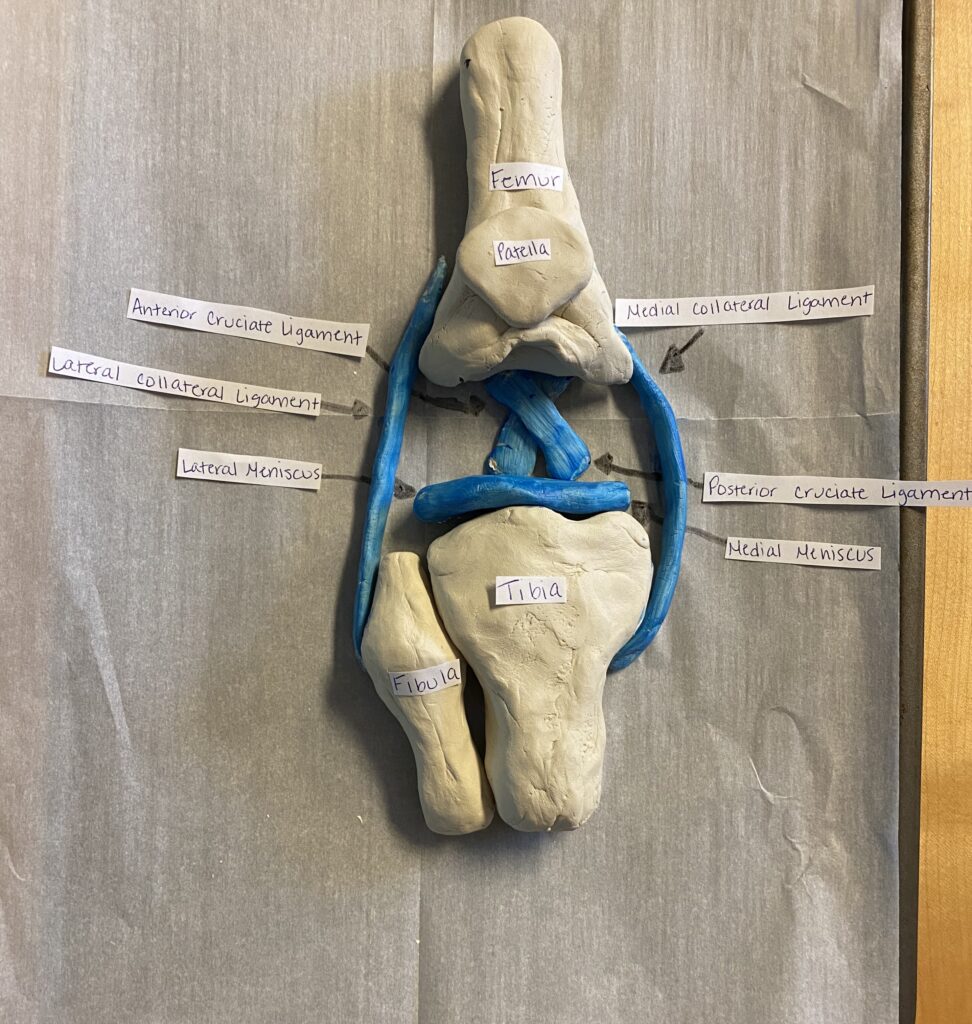For my STEAM project I chose to mold a model of the knee joint out of clay. This knee joint made of clay shows the structure of a knee, which is the largest joint in the body and functions to help move and stabilize the body. The blue represents the menisci and ligaments and the tan shows the bones involved in the knee joint.


For Hannah’s project, she used clay to mold the largest joint in the body, the knee joint. She chose to use clay in order to show the structure of the knee. Hannah used white clay to represent the bones of the knee joint and she used blue clay to represent the meniscus and the ligaments of the knee joint.
The knee joint is made up of four bones: the femur (thigh bone), the patella (kneecap), the tibia, and the fibula. The femur is the longest and strongest bone in the body and the distal end has a groove called the patellar surface, which is where the patella sits. The patella is what we consider our “kneecap”. It is the largest sesamoid bone in the body and is there to protect the distal femur from the muscle tendon rubbing. The patella also gives the quadriceps leverage power because of how it lifts the tendon away from the joint. The tibia and fibula are the two bones that form the lower leg. The head of the fibula sits against the lateral tibial condyle at the knee joint.
The lateral and medial meniscus are attached to the tibia and provide cushioning for the knee joint. The lateral and medial meniscus are pads made of fibrocartilage. The medial collateral ligament runs from the medial epicondyle of the femur to the medial tibia. The lateral collateral ligament runs from the lateral epicondyle of the femur to the head of the fibula. The posterior cruciate ligament and the anterior cruciate ligament are the two ligaments inside of the knee joint. They attach to the tibia in the area between the two tibial condyles and they run diagonally to attach at the inner aspect of a femoral condyle. Both ligaments work to give the knee stability.
Luego decidimos desde que recibí una oferta de trabajo donde él vive (estábamos con dos horas de diferencia) que me iría a vivir con él.